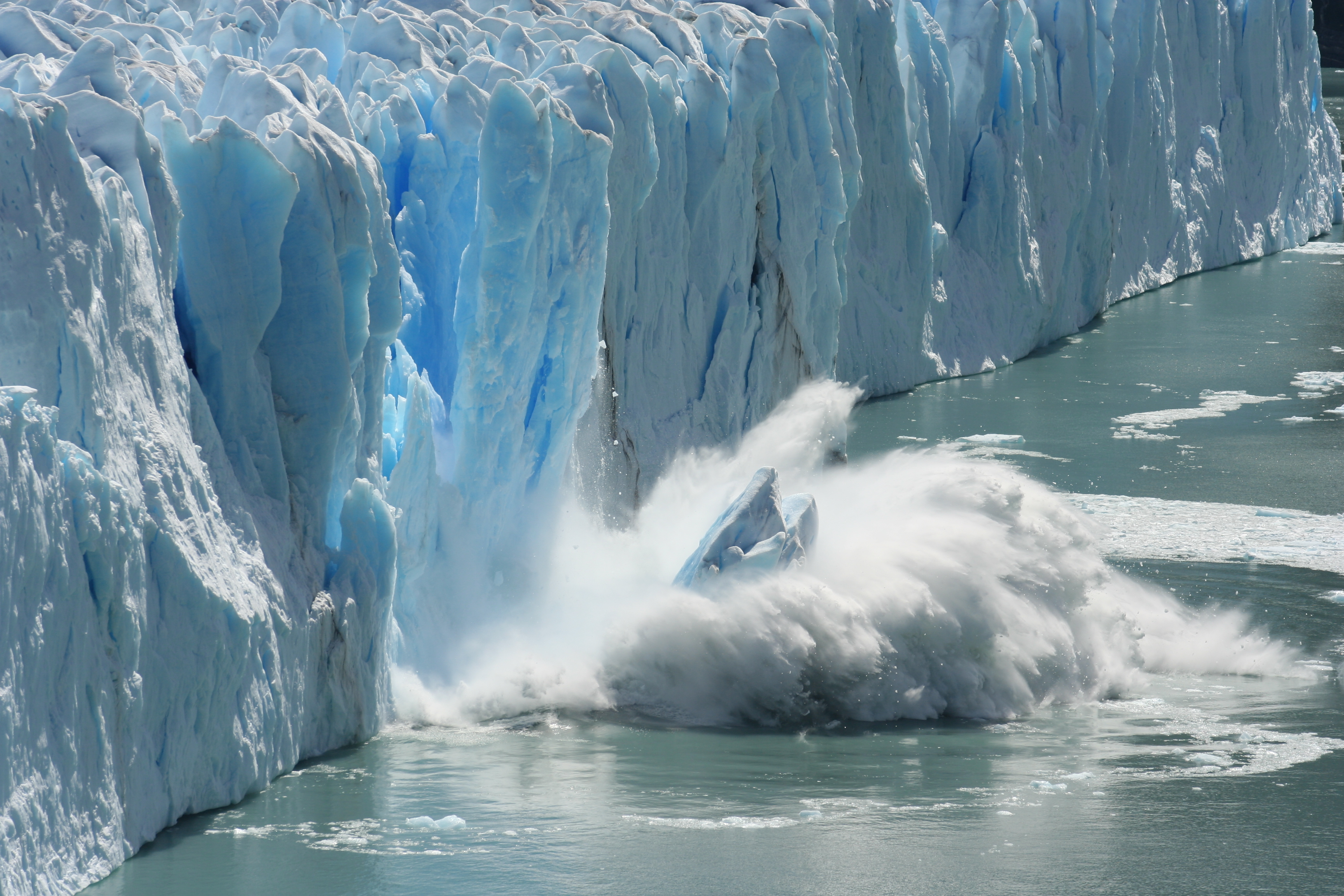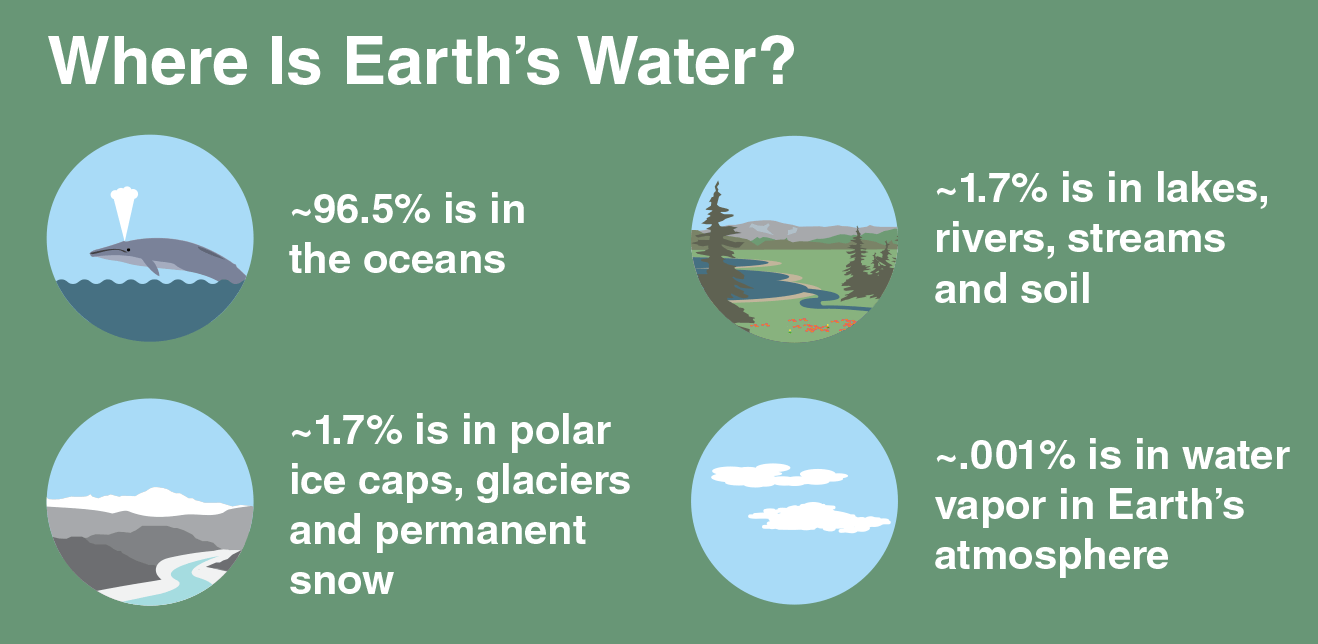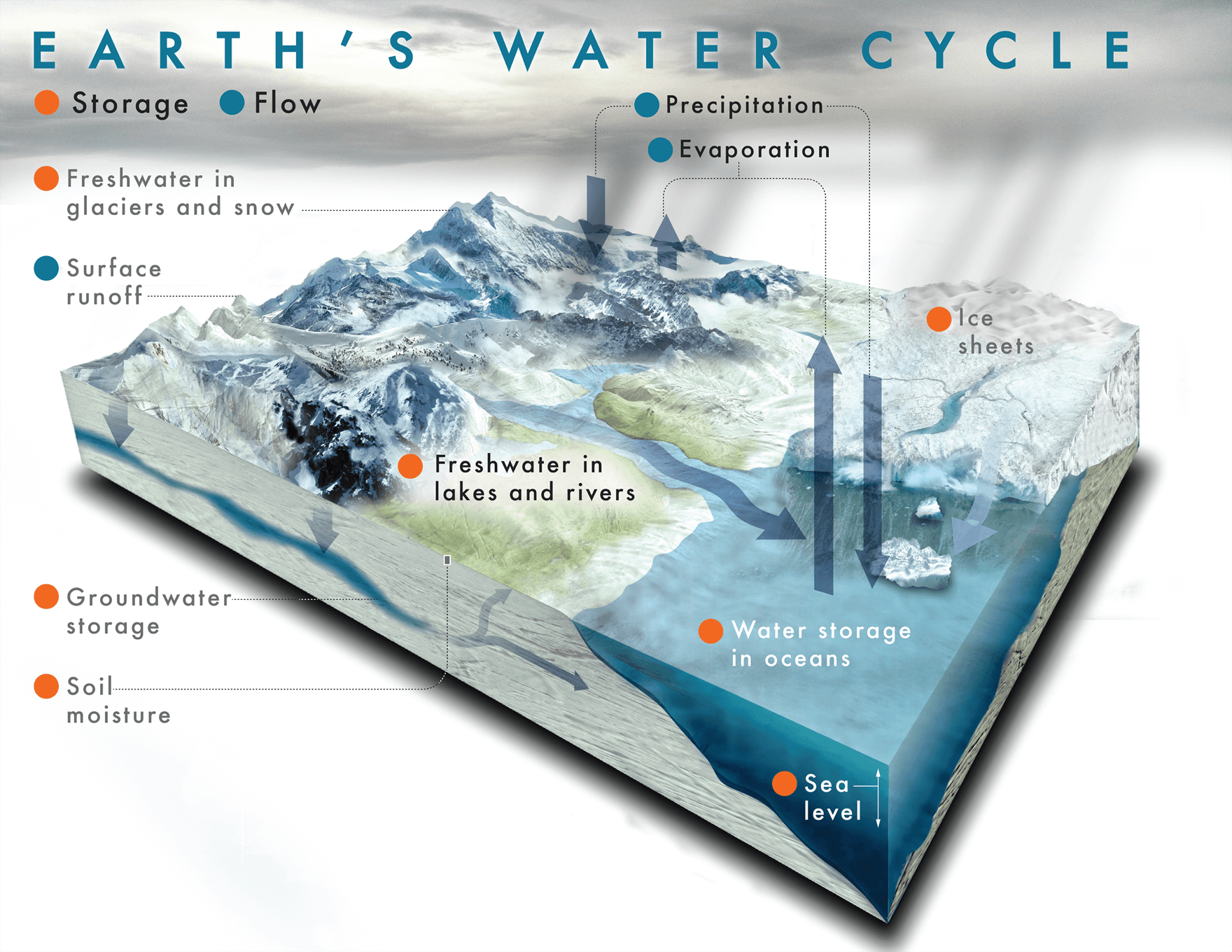AIM: TO LOOK AT THE WATER CYCLE AND HOW CLIMATE CHANGE IS AFFECTING IT.
Definition:
Scientific words:
- Evaporation. When water is heated by radiant energy it turns into water vapor.
- Transpiration. Evaporation from plants.
- Condensation. When water vapor cools, molecules join together and form clouds.
- Precipitation. When clouds get heavy the waters falls as rain, sleet, hail, or snow.
- Acidification: the action or process of making or becoming acidic.
We will be conducting an experiment that looks at the different ways that climate change is affecting the water cycle.
THE WATER CYCLE EXPERIMENT
Bag 1: Normal Water cycle
Bag 2: Water cycle with CO2 added: like Oceans in climate change
Bag 3: Water cycle with ice added: like Antarctica in climate change
Material:
Steps:
Two Images:
Findings:
| Bag? | The Water Cycle: Bag 1 | CO2 Water Cycle: Bag 2 Acid | Desert Water Cycle: Bag 3 |
Does it cycle? | Yes it's cycled | Yes it's cycled | Yes it's cycled |
Amount of Water | Two -Small drips | Two -Small drips | Two -Small drips |
Acidity | No acidity | Yes there's little acidity | No acidity |
Other comments:
- Water cycle bag 1 cycled
- Water cycle bag 1 had small drips
- Water cycle bag 1 had no acidity
- Water cycle bag 2 cycled
- Water cycle bag 2 had small drips
- Water cycle bag 2 had acidity
- Water cycle bag 3 cycled
- Water cycle bag 3 had small drips
- Water cycle bag 3 had no acidity
Conclusion:
First we started with precipitation and worked our way around that word. Precipitation is a scientific word for rain, which means it's connected to storms and hurricanes because that forms heavy and hard rain. On the right in the middle of storms and hurricanes is flooding, flooding can happen due to bad weather. On the right bottom corner of flooding is oceans, oceans can cause flooding due to earthquakes. Below oceans is evaporation, when the sun is really hot it can evaporate the salt from the oceans. On the left bottom corner of evaporation is freshwater, cause when oceans are evaporated the salt disappears which means it becomes freshwater. Below freshwater is water vapour, the reason why these two are connected is because water vapour is basically clean fresh water. Back to evaporation and on the right bottom corner is condensation, when something is evaporated it can turn into condensation. Below condensation is carbon dioxide, cause when you breathe out your breathing out carbon dioxide which has moisture, which is condensation.
1. Water cycle bags one and three had no acidity but water cycle bag two had little acidity.
2. Water cycle bags one, two and three all had the water cycle going
3. Water cycle bags one, two and three all had small drips of condensation move into the water. Water cycle words:
- Precipitation: It's a scientific word for (rain). When the water is evaporated into the clouds, it comes out as rain.
- Hurricanes: Hurricanes happened in warm winds and weather, then travels through until it dies out.
- Storms: Storms are a threat because there damage and destroy our lands. Without storms our nations wouldn't have come together to help one another.
- Evaporation: Evaporation is when the sun get's a hold of the water and it starts evaporating out. It get's in our clouds and comes out as rain.
- Carbon Dioxide: When you breathe out, your breathing out carbon dioxide. So you breathe in oxygen and breathe out carbon dioxide.
- Water: Water helps us to survive. We use water to swim, drink and etc.
- Oceans: Oceans are a place for our sea creatures to live. But also without oceans of waterways you probably couldn't live.
- Water vapor: Water vapor is a gaseous form. It's a state of hydrosphere. Water vapor can be produced from evaporation or boiling of liquid water and from ice. Water vapor is invisible.
- Freshwater: Freshwater is naturally water that isn't sea or brackish water. Fresh water include ice sheets, ice caps, glaciers, icebergs, bogs, ponds, lakes, rivers, streams, and even underground water called groundwater.
- Flooding: It's apart of climate change. Cause of the temperatures rising the ice is melting which means our water levels are rising too.
TODAY YOU WILL BE INVESTIGATING THE EFFECTS THAT CLIMATE CHANGE HAS ON THE WATER CYCLE.
- Using your SOLO hexagons poster write a paragraph about the different aspects of climate change.
- Write about the following Climate Change concepts:
ACIDIFICATION: HOW DOES CLIMATE CHANGE CONTRIBUTE TO THE ACIDIFICATION OF OUR OCEANS?
Ocean acidification is a ongoing decrease of pH of the Earth's oceans, caused by carbon dioxide from the atmosphere. Seawater is sightly basic and the ocean acidification involves towards pH-neutral conditions rather than a transition to acidic condition.
ACIDIFICATION: HOW DOES CLIMATE CHANGE CONTRIBUTE TO THE ACIDIFICATION OF OUR OCEANS?
Ocean acidification is a ongoing decrease of pH of the Earth's oceans, caused by carbon dioxide from the atmosphere. Seawater is sightly basic and the ocean acidification involves towards pH-neutral conditions rather than a transition to acidic condition.
HOW DOES acidification AFFECT CLIMATE CHANGE?
Picture:

Diagram of how it affects the water cycle.
DEFORESTATION: HOW DOES DEFORESTATION AFFECT CLIMATE CHANGE?
Picture:
Diagram of how it affects the water cycle.
ICE CAP MELT: HOW DOES ICE CAP MELT AFFECT CLIMATE CHANGE?
The melting of polar ice caps is caused by the rising increase of our global temperatures. The melting of polar ice caps can have serious consequences for all the living organisms on Earth. As the melting of polar ice caps the sea levels are rising and becoming less saline.
How does ice cap melting affect climate change?
With the global temperatures rising it's preventing polar ice caps to melting, which is cause sea levels to rise.Picture:








No comments:
Post a Comment
Please structure your comments as follows:
Positive - Something done well
Thoughtful - A sentence to let us know you actually read/watched or listened to what they had to say
Helpful - Give some ideas for next time or Ask a question you want to know more about
Note: Only a member of this blog may post a comment.